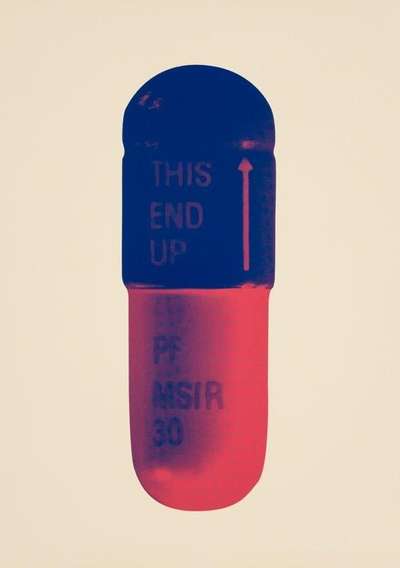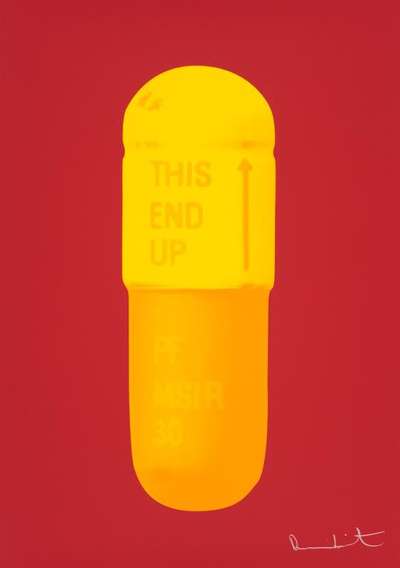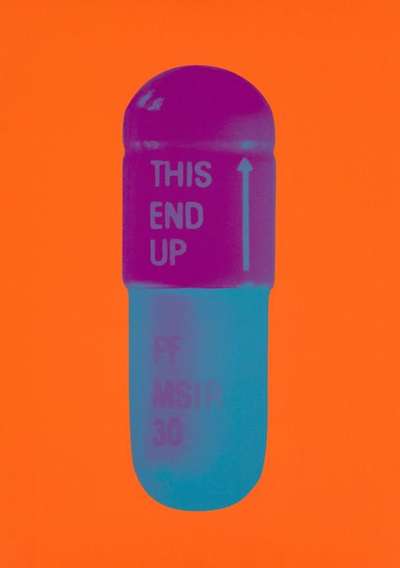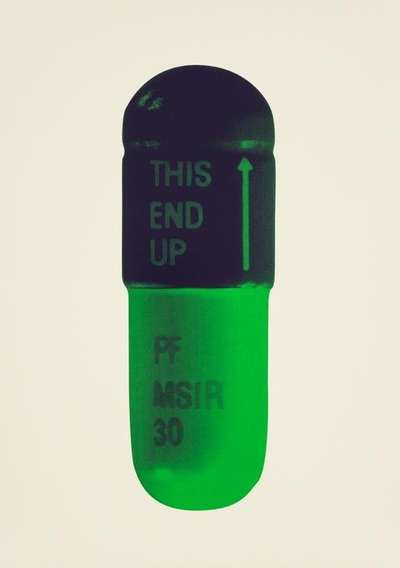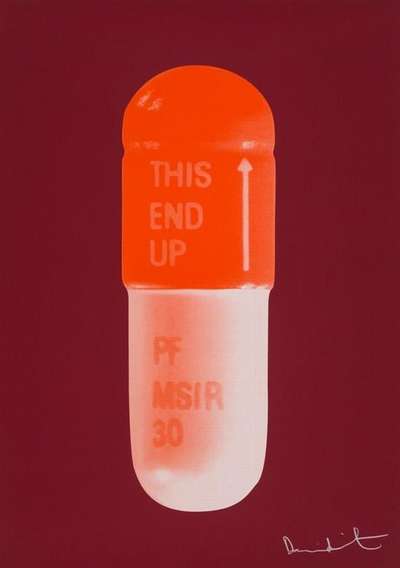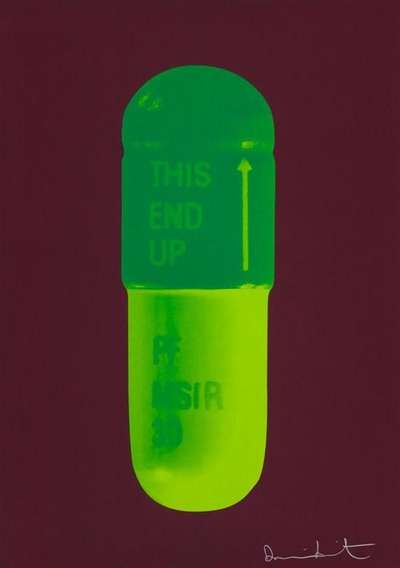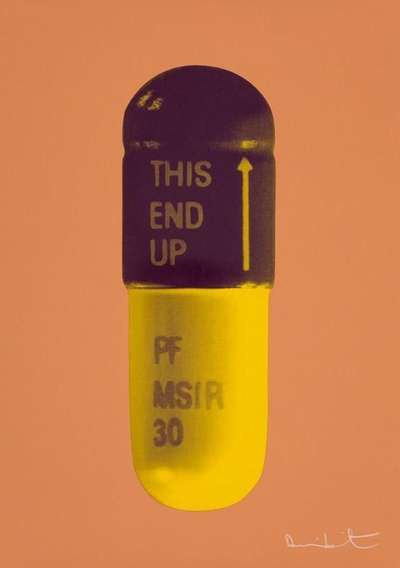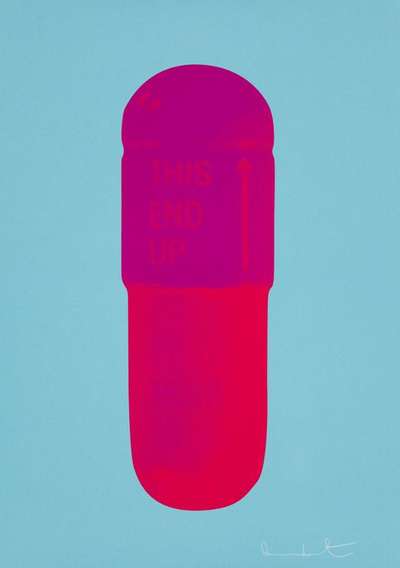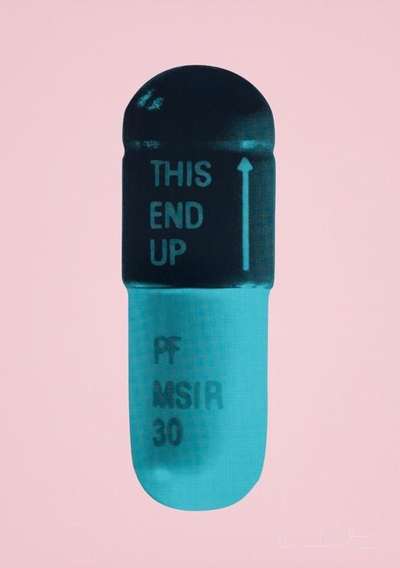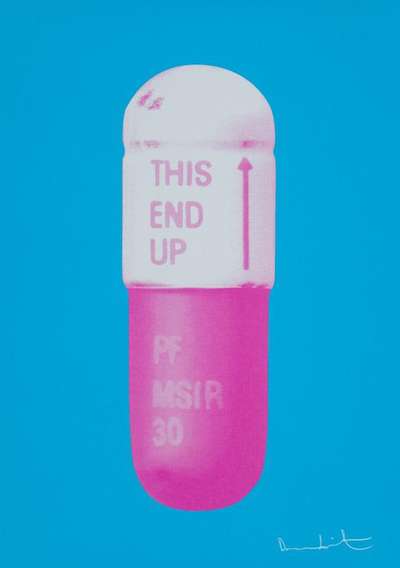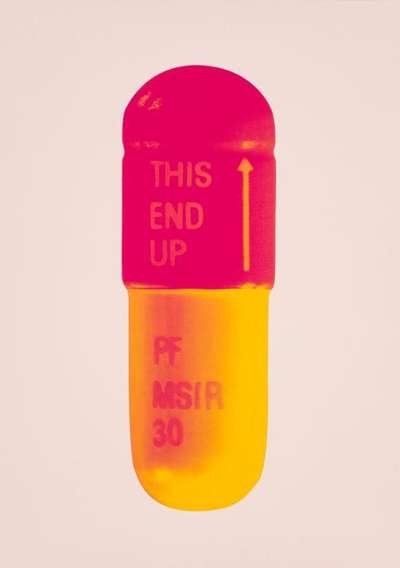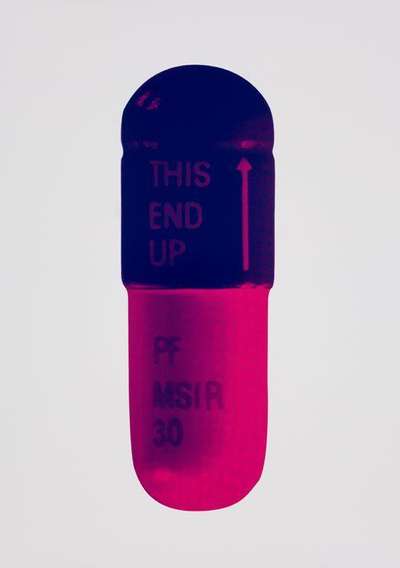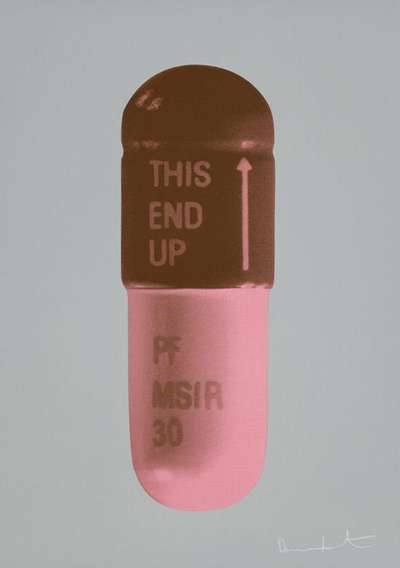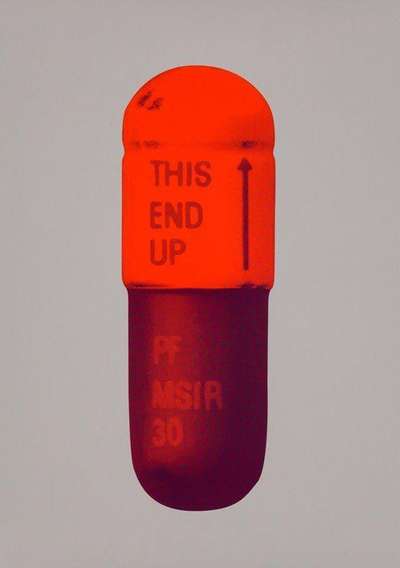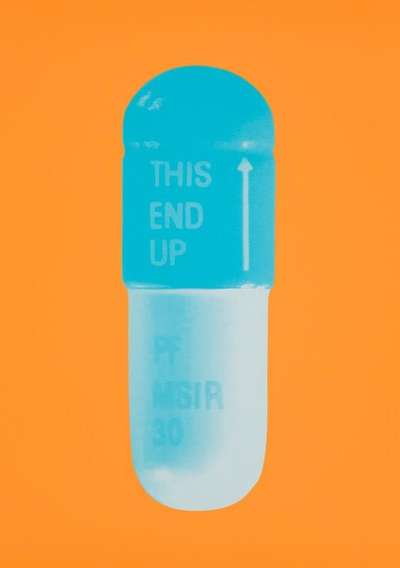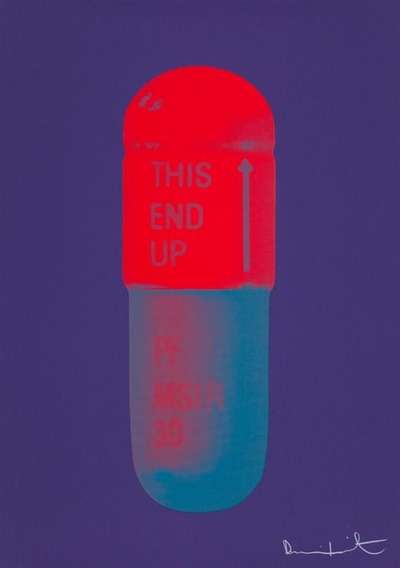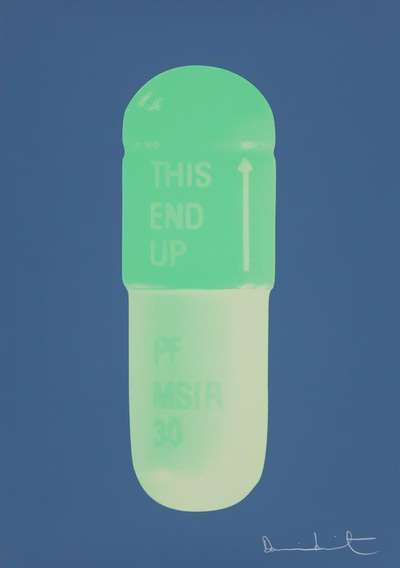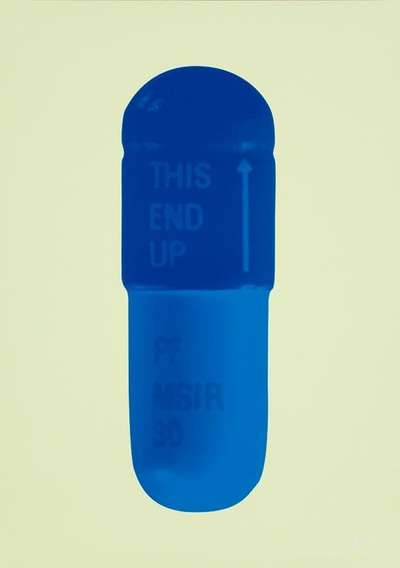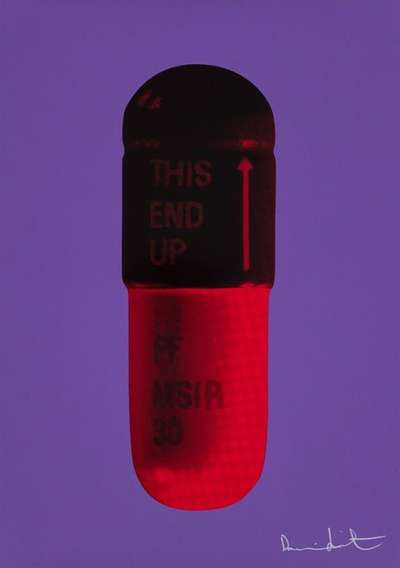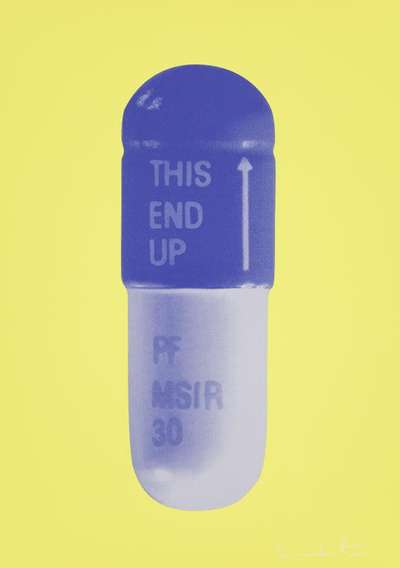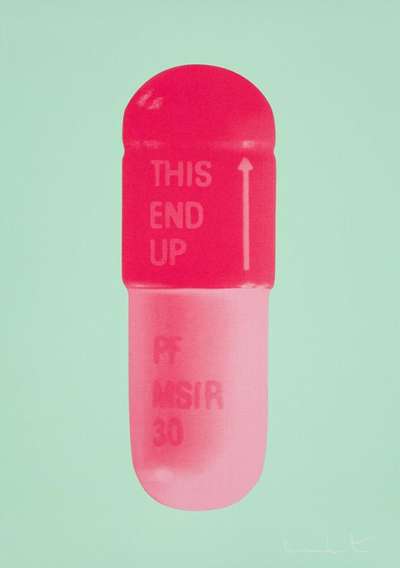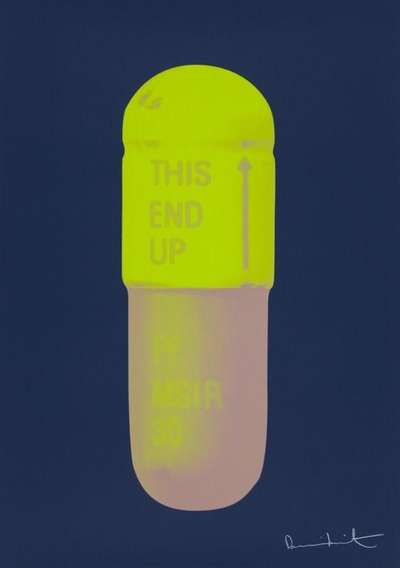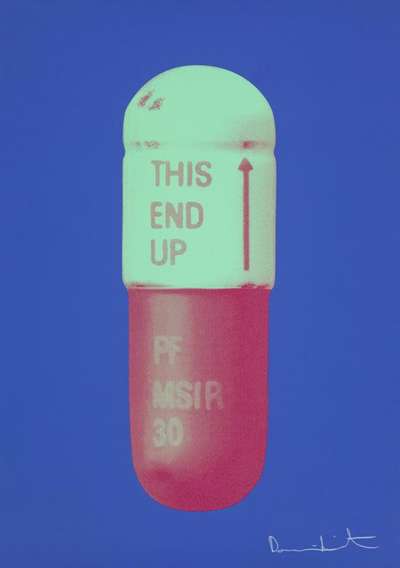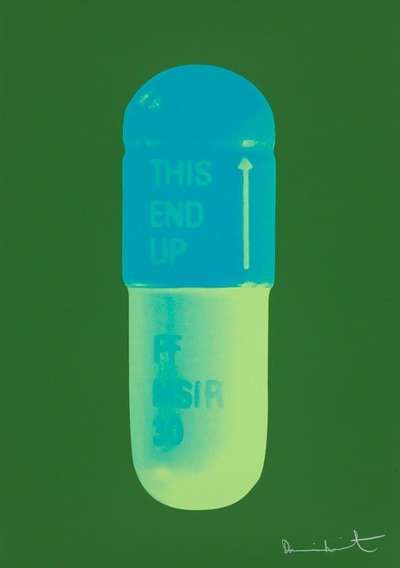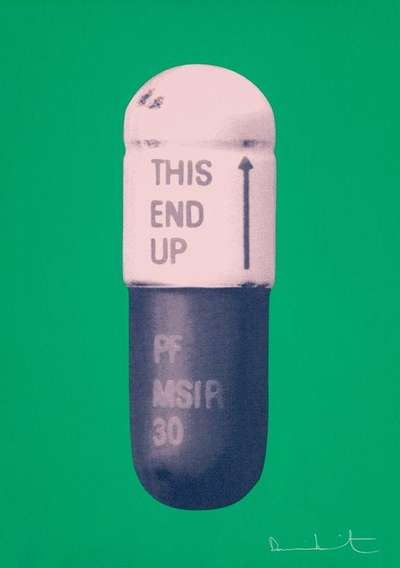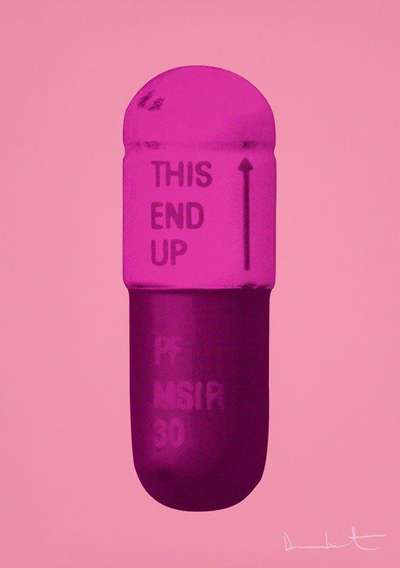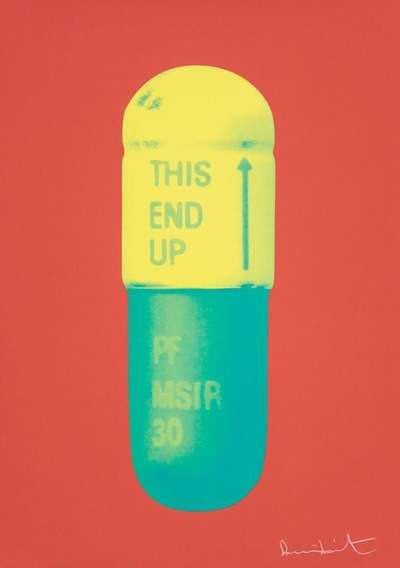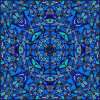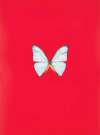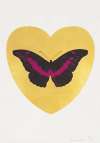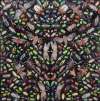The
Cure
Damien Hirst's print series The Cure (2014) explores the overlap of aesthetics and science embodied by pharmaceutical products. Brimming with the influence of Pop-Art, Hirst produced thirty silkscreen prints depicting an oversized pill, each in two bright hues on an equally bold backdrop.
Damien Hirst The Cure For sale
The Cure Value (5 Years)
Damien Hirst's The Cure series has historically shown more modest results compared with the artist’s wider oeuvre, with auction prices ranging from £5000 to £6750. Average annual growth has remained modest at -2.33%, with certain works seeing declines in value. Over 91 total auction appearances, average selling prices have held steady around £6718. This series appeals to collectors seeking accessible entry points into Damien Hirst’s print market.
The Cure Market value
Auction Results
| Artwork | Auction Date | Auction House | Return to Seller | Hammer Price | Buyer Paid |
|---|---|---|---|---|---|
 The Cure (violet, electric red, powder blue) Damien Hirst Signed Print | 26 Jun 2025 | Koller Zurich | £5,100 | £6,000 | £7,500 |
 The Cure (cream, aubergine, pea green) Damien Hirst Signed Print | 9 Dec 2021 | Phillips London | £3,995 | £4,700 | £6,500 |
 The Cure (fire red, sun yellow. fire orange) Damien Hirst Signed Print | 24 Jun 2021 | Tate Ward Auctions | £5,100 | £6,000 | £8,000 |
Sell Your Art
with Us
with Us
Join Our Network of Collectors. Buy, Sell and Track Demand
Meaning & Analysis
A set of 30 prints published in 2014, The Cure by Damien Hirst epitomises his fascination with the theoretical and visual appeal of pharmaceuticals. In the Cure series, Hirst produced thirty silkscreen prints on Somerset Tub all of which depict a large, two-colour pill. Hirst renders each pill in a unique combination of colours, meaning no two prints in the series are the same.
Throughout the series, Hirst uses bold and vibrant colours which resonate with the Pop Art style popularised by Andy Warhol in the 1960s. Hirst was clearly influenced by Warhol, the leading figure of the Pop Art movement. Warhol was known for blurring the boundaries between high and low culture by producing prints of everyday objects and consumer goods, such as high heel shoes or Campbell’s Soup cans. Hirst does something similar in this series by making pills into artworks. Warhol was famous for challenging the definition of art, and Hirst also does this in the Cure series by breaking down the strict dichotomy between art and science and making pharmaceutical products into works of art. Hirst continued to do this in 2017 with his Eat The Rich series, in which the artist depicted pharmaceutical packaging, instead of the medicinal products themselves.
The series is based on the minimalist aesthetic of the medicinal pill which, despite its simple appearance, behaves in an extremely complex and ingenious way. The simple style and design of the pills Hirst renders in the series reflects the confidence of the pharmaceutical industry and their ability to heal anyone and anything. The manipulation of scale in the prints, with the pills appearing to be extremely large, is another deliberate decision on the part of Hirst to represent the importance of modern medicine.
Hirst has a longstanding interest in the aesthetics of pharmaceuticals. While the artist was studying Fine Art at Goldsmiths, he produced an installation, known as the Medicine Cabinets, in which he filled cabinets with his grandmother’s old tablet packets.
